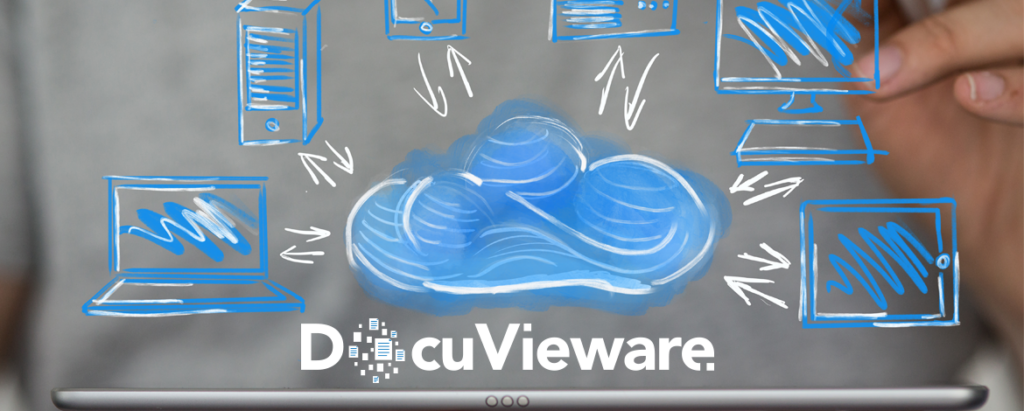Obscured by Clouds

Hi folks,
We’ve paraphrased the title of Pink Floyd’s seventh album not because it was also the soundtrack of a very interesting French film (La Vallée, 1972) but mainly because today we will try to give you an overview on cloud computing.
The term “cloud” became more and more frequent in IT since quite a few years now and it’s likely to become an IT-vocabulary champion soon so we’ll probably hear and use it as often as currently used by meteorologists, pilots and farmers.
Apparently the word “cloud” started its technical career due to the diagrams used by computer engineers: one server is graphically represented by a small icon within a circle so the representation of a multitude of servers grouped in a cluster looks like lots of crowded olympic circles. Or like a grape. “Or like a cloud“, must have figured out some engineer with obvious poetic tendencies.
Thanks to whom ‘clouds’ brought their mystery, ambiguity and remoteness in almost all our today’s computer-related conversations, conferences, writings and advertisements.
But the concept is much older than its fancy name: remember the beginnings of the Internet and all those free email providers? Where exactly do you think your (and the other zillion users’) free email accounts were physically being kept? No idea, right? Well, that’s because it was all about remote, ambiguous and even mysterious locations your inner self might have reffered to as “Don’t know-Don’t care“. Today you can call it “cloud” while the IT industry is ambitioned to offer more and more services for you to use in the same “Don’t know-Don’t care” manner.
Basically, cloud-computing can be defined as a set of computing services offered to individual or businesses users that can be accessed from anywhere at any time over the Internet.
Offered services can be a ready-to-use software application (Software as a Service, SaaS), a platform/environment on which software applications can be built (Platform as a Service, PaaS) or even “raw” hardware resources like servers, networking or data-center space (Infrastructure as a Service, IaaS).
In a nutshell, one can consume any computing resources needed, in whatever needed “quantity” (scale) and pay as much as consumed.
That is, without having to care about any of the potential troubles a local machine or network inherently brings: deprecation, insufficient computing power, server temperature, power outages,software licenses, updates and upgrades, security for both the physical machines and everything binary inside them, data backup/recovery and of course, expert personnel to maintain everything up and running.
Elastic services, elastic billings, no headaches and an anytime/anywhere accessibility.
Is this cloud nine or what?
Well, almost. Kind of. Perhaps. Maybe.
Like everything in this universe, cloud computing has its pros but its cons too.
“Things happen” everywhere, on the ground or in the clouds. Things like technical issues which, believe it or not, happen even to the best cloud-services providers, despite the high standards of maintenance. Or things like security issues. If your desktop or laptop might be interesting for a hacker, imagine the hunger a whole data centered filled with private or sensitive information from say, various corners of the world, can trigger. Of course, success rates for hackers on clouds are nearly zero same as are chances for various dysfunctions to produce serious damages. But they are not zero. And even if utopically, Zero-issues Perfection would be achieved, one still needs a good internet connection to get access to it. Yes, a little detail such as an internet connectivity issue can stay between you and your piece of cloud.
But all this being said, cloud computing is clearly an approach to keep an eye on, if not the way to go with right now.
Since 2006, when Amazon officialy launched AWS (Amazon Web Services) other big names like Microsoft, Google, IBM, Oracle, etc. followed quickly so at this moment we can fairly say that cloud-computing services reached maturity given the experience accumulated by the industry during the past years. A whole lot of issues have been addressed and prices get more and more interesting as more and more users (individuals and businesses) are moving to the cloud.
Important budgets have been spent on cloud-computing research and development (quick example: in 2011 Microsoft spent 90% of its total R&D budget of some10 bilion USD on cloud strategy) and these budgets are increasing.
All in all, for the time being everything seems to indicate that the future belongs to the clouds.
Whether or not everything will get obscured by clouds, that remains to be seen.
In any case, we, your friends at ORPALIS, devised and released DocuVieware, our universal HTML5 Viewer and document-management solution, a kit for developers to make rich document-related web-apps accessible to their users from anywhere at any time with just the modern browser installed on a no-matter-what computer or mobile device.
And in about 4 months from now we will add to the current “on-premises” deployment model, the cloud-based SaaS model as well as some surprises for general-public users.
But we have no intention to give details right now.
All we can say is our efforts are focused so you can enjoy real freedom and full control when it comes to your documents.
So you can finally remove the word “document” from your private blacklist of unpleasant tasks.
So you can “cloud out loud”.
Bye!
Bogdan
Tags:
